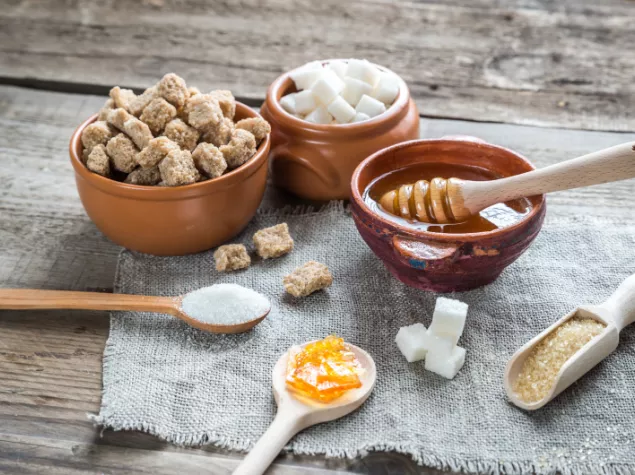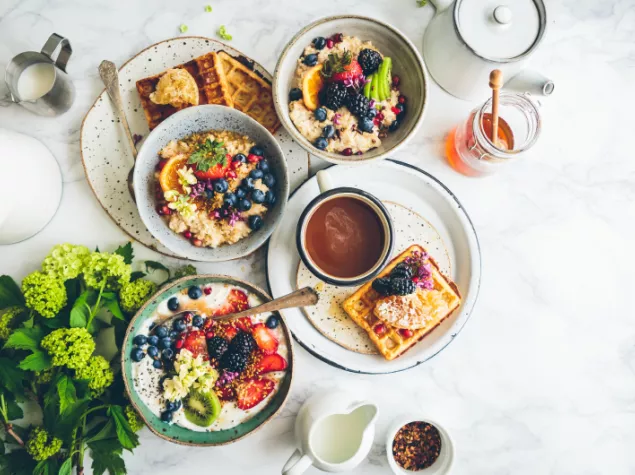
Frequently asked questions



Sugar can be found naturally in many plants, including within the fruits and vegetables they produce. It is found in higher levels in the sugar cane and sugar beet plants, which is why these plants are used to extract sugar. Sugar cane is a perennial grass that is grown in tropical climates and sugar beet is a root crop grown in cooler climates. Find out more here.
Sugar is produced naturally in sugar beet and sugar cane plants. The plants are harvested, washed, and the juice extracted. The juice is then boiled, refined to remove the impurities, and finally the natural sugars contained within the extracted juice are crystallised. Find out more here.
Sugar cane accounts for approximately 80% of global sugar production, whilst sugar beet accounts for around 20% of production. Sugar cane is a tropical crop, grown on large plantations in countries near the equator. Brazil is the largest producer of sugar cane. Further important sugar cane growing countries include India, Thailand, China, Australia, Mexico and South Africa, among others. Sugar beet grows better in more temperate climates, such as those in North America and Europe. The largest producers of sugar beet include Russia, France, the United States and Germany. Find out more here.
Sugar is naturally white. It is the naturally-occurring molasses, which give brown sugar its colour. These molasses are extracted during the refining of white sugar. Find out more here.
When producing sugar, 100% of the cane and beet are used, so that there is almost no waste from the production process Molasses, an unrefined sugar syrup from which no further sugar crystals can be obtained, and pulp, the fibrous plant materials, remain from sugar production. Molasses is primarily sold for animal feed and ethanol production but also adds great flavour to baked goods such as bread, cakes and biscuits, as well as sauces. Sugar pulp has a wide variety of uses including animal feed, biofuel and energy production, and paper and building materials production. Find out more here.
Sugars are found naturally in fruit, vegetables and dairy foods. They are also added to food and drink by food manufacturers, cooks, or ourselves. Find out more here.
Sugar is made up of two simple sugar units, glucose and fructose. Upon eating foods containing sugar, the glucose and fructose units are split apart by a digestive enzyme (sucrase) in the small intestine. These simple sugar units are then absorbed from the small intestine into the bloodstream, where they are transported to cells and used for energy or stored as glycogen in the liver and muscles, for later use as energy. Find out more here.
Sugars provide much more than just sweetness in foods: Sugars can enhance flavour, add texture and bulk, increase shelf-life, allow fermentation to occur, lower the freezing point (e.g., in icecream), and add colour (e.g. golden brown colour of baked goods). Find out more here.
A teaspoon of sugar has around 15 calories. This is a very similar amount compared to other sugars like high fructose corn syrup, coconut sugar, date sugar, agave, honey and maple syrup. Find out more about other sugars here.
Added sugars are sugars and syrups that are added to foods and drinks during processing and preparation.
Free sugars are sugars added to food or drinks, and sugars found naturally in honey, syrups, and unsweetened fruit and vegetable juices, smoothies and purées.
These terms are often used within dietary recommendations. Some countries label the amount of added sugars contained within a food and drink on the packaging. Many countries label total sugars (on labelling this may also read "of which sugars").
Total sugars includes all sugars that naturally occur in foods, plus added sugars.
Find out more here.
Sugars are found naturally in fruits, vegetables and milk products. Added sugars are sugars or syrups that have been added to foods and drinks. Find out more here.
For packaged foods and drinks, the ingredients list is a good place to start, as sugars added to a product must be included in it. Added/free sugars may be listed as ‘sugar’ but other terms include honey, maple syrup, molasses, nectars, agave syrup, coconut sugar, dextrose, fructose, sucrose, glucose, maltose, high-fructose corn syrup, fruit juice concentrate, and isoglucose. Check the food laws in the country you are interested in, to understand how sugars are labelled. Find out more about sugars labelling here.
Sucrose is what we know as "table sugar". It is produced naturally in plants and is extracted and refined from sugarcane and sugar beet. Find out more here.
The World Health Organization (WHO) recommends limiting intake of free sugars to less than 10% of total energy intake (moderate evidence for health), which is equivalent to around 50 g (or about 12 level teaspoons), for an adult of healthy body weight consuming about 2000 calories per day. WHO suggests that reducing free sugars intake to below 5% of total energy intake per day may have additional benefits (low evidence). Reducing free sugars to less than 5% of total energy intake is a "conditional" recommendation, issued when the evidence around the benefits and risks of an intervention are less certain. Few studies have been undertaken in populations with a low sugars intake. Individual countries often have their own dietary recommendations for sugars intake.
It is compulsory (by law) for food companies to display the ingredients on the packages of foods and drinks. As such, sugars aren't "hidden" in packaged foods and drinks and must be included in the ingredients list (1).
Find out more about sugars labelling here.
Labelling regulations (laws) vary across the globe. Any sugars added to packaged foods and drinks will be included in the ingredients list found on the food or drink packaging. Sugars may be labelled as sugar or for example, honey, maple syrup, molasses, nectars, agave syrup, coconut sugar, dextrose, fructose, sucrose, glucose, maltose, high-fructose corn syrup, fruit juice concentrate, and isoglucose. In many countries, information on the amount of total sugars (sugars naturally present in foods plus any added sugars) and, in the USA the amount of added sugars, is also required to be on the label of packaged foods and drinks. Check the food laws in the country you are interested in, to understand this further. Find out more about sugars labelling here.
The regulations (laws) surrounding nutrient claims on labels, such as "low sugar" or "reduced sugar", varies across the globe. In some countries, "reduced sugar" claims on labels can only be made if the product has 30% less sugar compared to a similar product. "Low sugar" claims can often only be made if the amount of sugars is below a set threshold (e.g. less than 5 g per 100 g of food). Check the food laws in the country you are interested in, to understand this further. Find out more about sugars labelling here.
Added sugars are exactly the same as sugars naturally present in foods. Hence, the body digests all sugars in the same way, regardless of where they come from. Find out more about the digestion and absorption of sugars here.
The body processes sugars from drinks and food in the same way, but the rate of absorption can vary. Solid foods containing sugars may lead to a slower release of sugars into the bloodstream compared to liquid forms. Factors like meal composition can also influence this process. In addition, fluids may also increase the amount of sugars consumed (e.g. it is easier to consume a glass of orange juice compared to eating 5 oranges). Find out more about the digestion and absorption of sugars here.

Understand sugar, the different sources and types.

The role sugars play in foods, dietary intakes and sources.

Evidence-based, scientific information on sugars' role in health and nutrition.